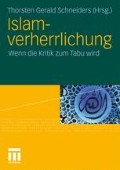Zusammenfassung
Die Quellenlage zur Entstehung und Anfangszeit des Islam ist bekannter- und anerkanntermaßen schwierig. Diese Anfangszeit beginnt mit dem traditionell für die Prophetentätigkeit Muhammads angenommene Periode von 610 bis 632 nach der Zeitenwende und dauert bis zum Ende der umayyadischen Herrschaft im Orient 750. Dem Historiker stehen hier im Wesentlichen drei Quellentypen zur Verfügung:
-
1.
Die innerislamischen literarischen Quellen,
-
2.
die außerislamischen literarischen Quellen und
-
3.
Realien beziehungsweise Inschriften und bildliche Darstellungen, wobei bei letzteren Münzen eine besondere Bedeutung zukommt.
Access this chapter
Tax calculation will be finalised at checkout
Purchases are for personal use only
Preview
Unable to display preview. Download preview PDF.
Literatur
Burgmer, C. (Hrsg.) (2004): Streit um den Koran. Die Luxenberg-Debatte. Standpunkte und Hintergründe. Berlin.
Crone, P. (2004): Meccan trade and the rise of Islam. Piscataway, N.J.
Crone, P. (2008): „What do we actually know about Mohammed?“, in: www.opendemocracy.net.
Crone, P. (2008a): From Arabian tribes to Islamic empire. Army, state and society in the Near East c.600-850. Aldershot u.a.
Crone, P. und M. Cook (1977): Hagarism. The making of the Islamic world. Cambridge u.a.
Cuypers, M. (2009): The banquet. A reading of the fifth sura of the Qur'an. Miami, Fl.
Déroche, V. (Hrsg./Übers.) (1991): „Doctrina Jacobi nuper Baptizati“, in: G. Dagron und V. Déroche: „Juifs et chrétiens dans l'Orient du VIIe siècle“, in: Travaux et mémoires11(1991), S. 17–248.
Donner, F. M. (1981): The early Islamic conquests. Princeton, N.J.
Foss, C. (2005): „An unorthodox view of the rise of Islam“, in: Journal of Roman Archaeology18(2005), S. 771–774.
Görke, A. und G. Schoeler (2008): Die ältesten Berichte über das Leben Muhammads. Das Korpus 'Urwa Ibn az-Zubair. Princeton, N.J.
Hawting, G. R. (1999): The idea of idolatry and the emergence of Islam. From polemic to history. Cambridge u.a.
Heidemann, S. (2007): „Münzen sind konservativ. Der frühe Islam im Spiegel des numismatischen Befundes“, in: FAZ, 28.2.07 [www.uni-jena.de].
Heidemann, S. (2009): „The development of the representation of the early Islamic empire and its religion on coin imagery”, in: A. Neuwirth, N. Sinai und M. Marx (Hrsg.): The Qur'an in context. Literary and historical investigations into the Qur'anic milieu. Leiden, S. 149–195.
Hinds, M. u.a. (1996): Studies in early Islamic history. Princeton, N.J.
Hoyland, R. G. (1997): Seeing Islam as others saw it. A survey and evaluation of Christian, Jewish, and Zoroastrian writings on early Islam. Princeton, N.J.
Johns, J. (2003): „Archaeology and the history of early Islam. The first seventy years“, in: Journal of the Economic and Social History of the Orient46(2003), S. 411–436.
Kiltz, D. [2010]: „The relationship between Quranic Allâhand Syriac Allâhâ.” [im Druck; Beitrag für den geplanten Sammelband zur Internationalen Tagung „Christen im Orient – Geschichte und Bedeutung“ vom 28. bis 29. November 2008 in Berlin].
Marx 2008: Marx, Michael: Ein Koran-Forschungsprojekt in der Tradition der Wissenschaft des Judentums: Zur Programmatik des Akademienvorhabens Corpus Coranicum. In: Dirk Hartwig u. a. (HG.), Im vollen Licht der Geschichte. Die Wissenschaft des Judentums und die Anfänge der kritischen Koranforschung. Würzburg 2008, S. 41–54.
Neuwirth, A. (2004): „Zur Archäologie einer Heiligen Schrift. Überlegungen zum Koran vor seiner Kompilation“, in: C. Burgmer (Hrsg.): Streit um den Koran. Die Luxenberg- Debatte. Standpunkte und Hintergründe. Berlin, S. 82–97.
Neuwirth, A. (2007): Studien zur Komposition der mekkanischen Suren. Die literarische Form des Koran – ein Zeugnis seiner Historizität. Berlin.
Neuwirth, A., Sinai, N. & Marx, M. (2009) The Qur'an in Context: Historical and Literary Investigations into the Qur'anic Milieu (Texts and Studies on the Qur'an). Brill Academic Publishers.
Ohlig, K.H. und G.R. Puin (Hrsg.) (2005): Die dunklen Anfänge. Neue Forschungen zur Entstehung und frühen Geschichte des Islam. Berlin.
Osman, Gh. (2005): „Pre-Islamic Arab converts to Christianity in Mecca and Medina. An investigation into the Arabic sources”, in: The Muslim World95(2005), S. 67–80.
Palmer, A./S.P. Brock und R. Hoyland (1993): Seventh century in the West-Syrian chronicles. Liverpool.
Reynolds, G.S. (2008): The Qur'ân in its historical context. London u.a.
Robin, Christian-Julien (2004): Himayr et Israël. Comptes rendues des séances de l'année 2004, Avril-Juin.
Saleh, W. (2009): „The etymological fallacy and Quranic studies. Muhammad, paradise, and late antiquity”, A. Neuwirth, N. Sinai und M. Marx (Hrsg.): The Qur'an in context. Literary and historical investigations into the Qur'anic milieu. Leiden. [www.safarmer.com]
Seidensticker, T. (1996): „The authenticity of the poems ascribed to Umayya Ibn Abi al- Salt“, in: J.R. Smart (Hrsg.): Tradition and modernity in Arabic language and literature. Richmond, S. 87–101.
Sinai, N. (2009): Fortschreibung und Auslegung. Studien zur frühen Koraninterpretation. Wiesbaden.
Versteegh, C.H.M. (1993): Arabic grammar and Qur'ânic exegesis in early Islam. Leiden.
Editor information
Rights and permissions
Copyright information
© 2010 VS Verlag für Sozialwissenschaften | Springer Fachmedien Wiesbaden GmbH
About this chapter
Cite this chapter
Kiltz, D. (2010). Schatten über den Anfängen. In: Schneiders, T.G. (eds) Islamverherrlichung. VS Verlag für Sozialwissenschaften. https://doi.org/10.1007/978-3-531-92384-0_2
Download citation
DOI: https://doi.org/10.1007/978-3-531-92384-0_2
Publisher Name: VS Verlag für Sozialwissenschaften
Print ISBN: 978-3-531-16258-4
Online ISBN: 978-3-531-92384-0
eBook Packages: Humanities, Social Science (German Language)

